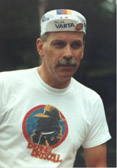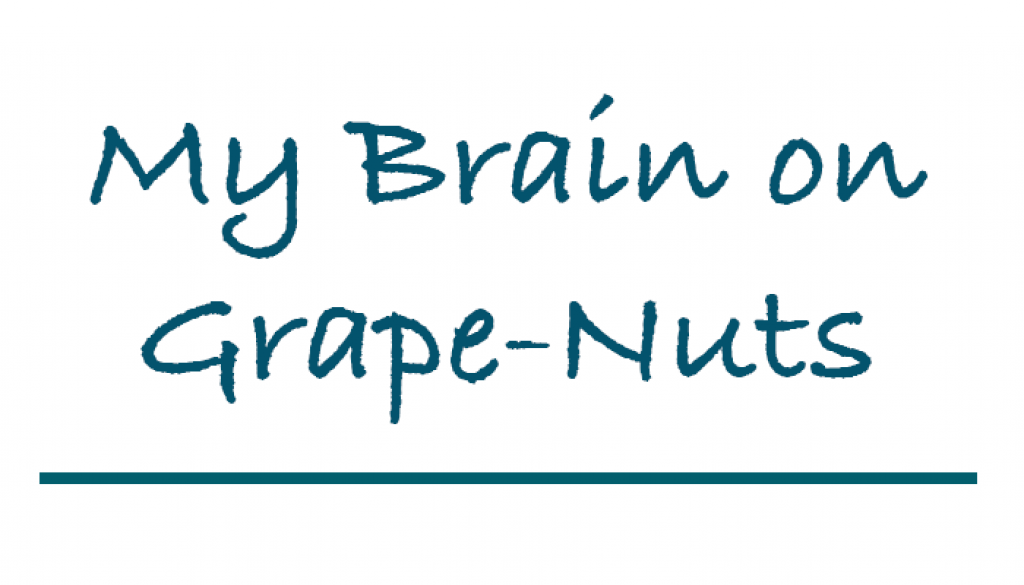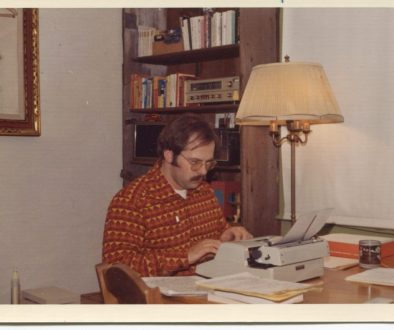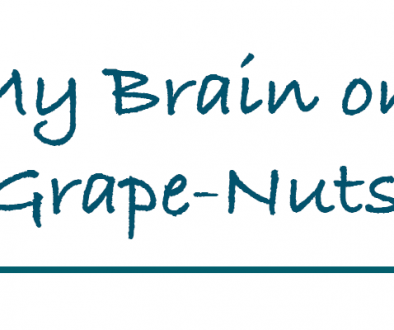“One For The Heart”
A reminiscence about my late father, whose birthday is April 2nd.
Braking to a stop, I snapped out of my pedals and dropped both feet to the ground. Rivulets of sweat poured from underneath my helmet, soaking the sweatband, puddling around my ears and sunglasses.
It was three o’clock in the afternoon. The day was much too hot for cycling, but this wasn’t just any bike ride. David and I were about six miles up the Kancamagus Highway, a long, twisting two–lane highway traversing the White Mountains of New Hampshire, known locally as “The Kank.” Named for New Hampshire’s Kancamagus Indians, we were on a thirteen-mile stretch of the highway wending its way from Lincoln, elevation 902 feet, up to the Kancamagus Pass, at 2,855 feet. At the summit it descended for some twenty miles, dead-ending at Route 16 in Conway, but that’s a story for another day.

I love riding and its challenges, but without a clear goal or destination I’m not likely to get too excited. I crave pedaling some route or destination where I haven’t been before, then trying to find my way back. Sometimes the way home can get a bit long and tiring. Today’s ride would clearly be a challenge.
David’s a better rider than me. He’s had more time in the saddle. But we share history and have been through a lot together. Our girlfriends introduced us, then we bonded through machines: first Porches, now bicycles. Over the years we converted our testosterone-fueled energy into self-improvement and fitness. David challenges me to strive for personal-best cycling experiences. He can turn a simple day ride into an achievement. Like, if your father’s about to die from a heart attack, go conquer The Kank.
I’d tackled the Kancamagus Pass on two previous occasions; both times I’d blown myself out by riding too hard too early on the steep climb up to the saddleback. Both times I’d had to stop, panting and wheezing, and turn around. The first time I made it to the Big Rock Campground, about six miles up. The second time I climbed another two and a half miles to where the Kancamagus River’s north fork meets the Hancock Branch. I climbed off my bike to rest, so weakened that my mulishly strong legs nearly gave out on me. I slipped off my shoes and socks and went barefoot through the grass and across the rocks to the river water, where I plunked down on a big stone to refuel and recover. With five miles still to go, I’d had enough and turned around.
But riding with David today, we had passed Big Rock without having to stop. Higher up, we paused and leaned our bikes against a massive wooden Forest Service sign. Feeling a little giddy, wringing the sweat out of our headbands, we were enjoying our ride thus far. Between chunks of energy bars and slugs of water, we celebrated nothing in particular.
* * *
The call had come the night before: my father had suffered yet another heart attack and was in the hospital. My father, the cholesterol junkie, survivor of three bypass operations, a heavy smoker for most of his life, a guy for whom exercise was gardening or puttering around the house. But when that call came, none of my personal judgments or criticisms mattered. I’d known for a long time this day would eventually come, but knowing is not feeling. I thought he might not recover from this one. I needed to be on an airplane, soon, to say goodbye.
After observing his heart problems for the previous 15 years, I also knew this wasn’t the way I wanted to end my life. I’d taken up serious cycling three years earlier, and here I was today, 46 years old, trying to summit The Kank. It was David’s idea, this heart-pumping ride for my old man. Perhaps it was his way of suffusing the ride with meaning, signaling that he knew what I was feeling. He’d lost his father long ago, and the year before he and I had buried his mother. Family ties ran deep with David, and now, even though my father was half a continent away, they did for me as well.
* * *
On our bikes again, David asked me, “How are you doing in second gear?” As we’d begun our gradual ascent earlier, he’d drafted behind me to check which gear I was in, recommending I downshift to the next to lowest. “Never begin a ride in a gear you don’t think you can’t finish in,” he’d said. On my earlier rides I’d started out a gear or two higher which, I now realized, had exhausted me far too soon. I told him I was doing fine, and I truly was.
As we rounded the next curve I downshifted again. It was an affirmation when David shifted nearly simultaneously. We settled into a rhythm as we pedaled away in the bright sunlight, up and through the deeply forested mountains. Every once in a while, we’d see a Forestry Service sign marking a hiking trailhead. We came to a sign that told us we’d ridden eight miles of the thirteen. No problem! I was going to summit today!
Except the really steep grade—nine percent—was still ahead of us. The climb coiled into a curve that swept to the left and kept rising, up, up, past another trailhead and a natural waterfall pouring down the side of the mountain. I could smell the water as we rode past it. Up ahead, The Kank’s big hairpin curve was getting closer, well-marked with large signs announcing a speed limit of 20 mph. “OK,” I huffed, grinning, “I’ll try to restrain myself.”
We started into the hairpin bend and it just kept going and going and getting steeper. It felt endless and as our speed dropped, we began to feel the oppressive heat. Finally, we emerged from the curve and saw a sign announcing a scenic overview was just ahead. We pulled in for a brief pit stop, sweat pouring off us. I chugged from my water bottle as my heartbeat slowed.
As we rolled out of the parking lot, I refocused on breathing evenly. In through the nose, out through the mouth. Nose, mouth, nose, mouth, I lapsed into a Lamaze-like pant. The mantra redirected my attention from what a bastard this climb was. One pedal revolution after another; breathe, pedal, breathe, pedal. I squirted my face with water. As we passed a “Prevent Forest Fires” sign David, riding a hundred feet or so in front of me, called out, “Remember, this one’s for your dad!”
Would it be the last one? God knew I’d had this privilege of rushing to his deathbed before. But this time the doctor had said he wasn’t going to survive. Meanwhile, my own heart was pounding like a drum in my ears, sweat ran into my eyes and my legs were on fire with lactic acid as I cranked on at 4 mph. I realized my head was filled with what James Joyce called “the agenbite of inwit,” that bitter pill of awareness, and all the physical discomfort of the moment was twisting into these painful memories.
Finally the road, a miasma of stippled, cracked, gray asphalt, straightened out into a steady ascent. On my right, strewn just across the white line, was dangerous roadhouse gravel. My energy—nay, my will—gave out. I snapped out of a pedal and stopped.
David looked back and called out, “C’mon! We’re almost there!”
Yeah right, I thought. We were almost there a mile ago.
And suddenly I realized how my thoughts, like the grade, were working to defeat me. I had turned my anger and anguish against myself. No, I wasn’t as strong a rider as I wanted to be, but still I was improving. I was riding stronger every time. No, my dad wasn’t the man I wished him to be, but he was still my father. The realization seeped into me: yes, I love him, even for all of his shortcomings. That’s why I needed to be near him, why I was riding to the top of this mountain—all out of love for him. It was a ride for his heart and a journey for my spirit. I could’ve told my father theride was for him, maybe make him proud of me. Perhaps I might even become an example for my son. But there was no need.
I clicked back into my pedal and pushed away, toward the mountaintop. The driver of a car heading downhill smiled and gave me a thumbs up. I smiled back, rejuvenated. And David was right. Up ahead, not far now, was the sign: Kancamagus Pass, White Mountain National Forest, 2,855 feet. I caught up with him and we rolled triumphantly over the top together into the rest area. We walked our bikes to the old iron pump to fill our bottles, gulping down cool, fresh water.
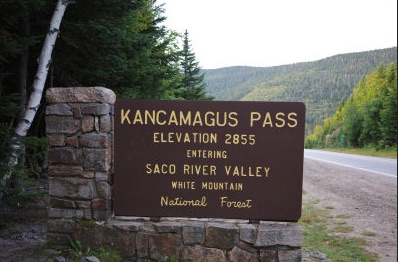
The next day I flew from Lincoln, New Hampshire to Lincoln, Nebraska. My father, knocking at death’s door before I had arrived, was making a miraculous recovery. The doctors sent him home three days later. As I sat at his bedside, holding his hand, I was suddenly overwhelmed by a powerful wave of tenderness for him. I leaned down and like a child put my head on his chest. He put his arm around my shoulder and, voice cracking with emotion, he whispered, “You know I’ve always been so proud of you.”
No, I didn’t know that, Dad, I thought to myself. But I can’t tell you how much it means to hear you say it.
*
“One for the Heart: A Tour for a Father’s Love” was first published in the March, 1993, issue of The Ride magazine. After a short time in home hospice, my father passed shortly thereafter.
